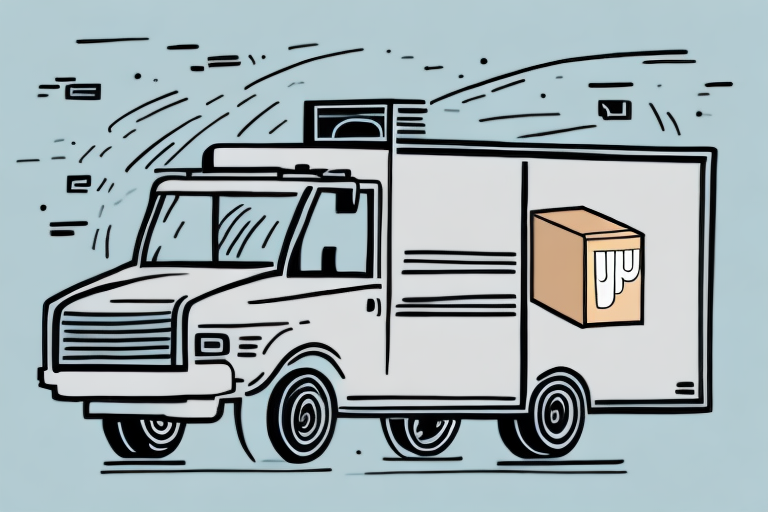Understanding FedEx Declared Value: What You Need to Know
When shipping valuable items with FedEx, it’s important to understand the concept of declared value. This term refers to the maximum value of a package that FedEx will assume liability for in the event that it is lost, stolen, or damaged during transit. In this article, we’ll take an in-depth look at FedEx declared value, including why it’s important, how to determine the correct declared value for your shipment, and how to protect your packages during shipping.
What is FedEx Declared Value?
Simply put, FedEx declared value is the maximum amount of liability that FedEx assumes for your shipment. This value is determined by the shipper and is based on the estimated value of the contents of the package. In the event that the package is lost, stolen, or damaged during transit, FedEx will be liable for up to the declared value of the package (subject to certain limitations). It’s important to note that declared value is not the same as insurance, which is a separate product that can be purchased to provide additional protection beyond the package’s declared value.
When determining the declared value of your package, it’s important to accurately assess the value of the contents. If the declared value is too low, you may not receive adequate compensation in the event of loss or damage. On the other hand, if the declared value is too high, you may end up paying more for shipping than necessary. It’s a delicate balance that requires careful consideration.
In addition to declared value and insurance, FedEx also offers a variety of other shipping options and services. These include same-day delivery, international shipping, and specialized handling for fragile or oversized items. By choosing the right combination of services, you can ensure that your package arrives safely and on time, no matter where it’s going or what’s inside.
Why is Declared Value Important for Shipping?
Declared value is an important consideration for anyone shipping items of value with FedEx. Without a declared value, FedEx will only assume liability for up to $100 per package. By declaring a value for your package, you can ensure that FedEx assumes greater liability for any losses or damages that occur during shipping. This is particularly important for high-value items that could be expensive to replace if lost or damaged in transit.
Another reason why declared value is important for shipping is that it can affect the cost of your shipment. The higher the declared value, the higher the cost of shipping. However, it is important to accurately declare the value of your package to avoid any issues with customs or insurance claims.
Additionally, some countries require a declared value for customs purposes. Without a declared value, your package may be held up in customs or even returned to the sender. It is important to research the customs requirements of the destination country before shipping to ensure that you comply with all regulations.
The Difference Between Declared Value and Insurance
It’s important to understand that declared value is not the same as insurance. Declared value is simply the amount of liability that FedEx assumes for your package, based on the value that you declare. In contrast, insurance is a separate product that can be purchased to provide additional protection beyond the declared value of the package. While it’s not always necessary to purchase additional insurance, it can provide added peace of mind for shippers concerned about the loss or damage of their valuable items.
When determining the declared value of your package, it’s important to accurately assess the value of the contents. If the declared value is too low, you may not receive adequate compensation in the event of loss or damage. On the other hand, if the declared value is too high, you may end up paying more for shipping than necessary. It’s important to strike a balance and declare a value that accurately reflects the worth of your package.
It’s also worth noting that certain items may not be eligible for declared value or insurance coverage. For example, FedEx may not cover items that are considered hazardous materials, perishable goods, or items that are prohibited by law. Before shipping your package, it’s important to review FedEx’s policies and restrictions to ensure that your items are eligible for coverage.
How to Determine the Correct Declared Value for Your Shipment
When determining the declared value for your package, it’s important to consider the value of the contents, as well as any potential costs associated with losing or damaging the item during shipping. For example, if you’re shipping a valuable antique that’s irreplaceable, you may want to declare a higher value than if you’re shipping a less valuable item that can be easily replaced. Additionally, it’s important to consider any potential fees associated with declaring a higher value, as these fees can vary based on the value of the package.
Another factor to consider when determining the declared value for your shipment is the destination country’s customs regulations. Some countries have specific rules and regulations regarding the declared value of imported goods, and failing to comply with these regulations can result in delays or even seizure of your package. It’s important to research the customs regulations of the destination country before declaring the value of your shipment.
Finally, it’s important to note that the declared value of your shipment can affect the level of insurance coverage provided by the shipping carrier. In some cases, carriers may only provide insurance coverage up to the declared value of the package, so it’s important to accurately declare the value to ensure proper coverage in the event of loss or damage during shipping.
Factors That Affect the Declared Value of a Package
There are several factors that can affect the declared value of a package. For example, the type of item being shipped, its value, and the destination all play a role in determining the appropriate declared value. Additionally, the shipping method and the level of service selected can also impact the declared value of the package. For this reason, it’s important to carefully consider all of the relevant factors when determining the correct declared value for your shipment.
Common Misconceptions About FedEx Declared Value
There are several common misconceptions about FedEx declared value that are important to be aware of. For example, some shippers believe that FedEx will assume liability for the full value of their package without a declared value. However, without a declared value, FedEx will only be liable for up to $100 per package. Additionally, some shippers believe that FedEx insurance is the same as declared value, which is not the case.
How to File a Claim for a Damaged or Lost Package with FedEx
In the event that your package is lost or damaged during transit, it’s important to file a claim with FedEx as soon as possible. To file a claim, you’ll need to provide information about the package, including its declared value, and submit supporting documentation, such as photos of the damage or proof of purchase. FedEx will then investigate the claim and provide potential compensation based on the declared value of the package.
Tips for Protecting Your Packages During Shipping with FedEx
There are several steps that you can take to protect your packages during shipping with FedEx. First, it’s important to package your items properly, using sturdy packaging materials and plenty of cushioning. Additionally, you should mark your package as fragile if the contents are delicate or breakable. Finally, you may want to consider purchasing additional insurance beyond the declared value of the package, particularly for high-value items that are particularly vulnerable to damage or loss during shipping.
Understanding the Limits of FedEx’s Liability for Lost or Damaged Packages
It’s important to understand that even with a declared value, there are limits to FedEx’s liability for lost or damaged packages. Specifically, FedEx’s liability is limited to the lesser of the declared value of the package or the actual cost of repair or replacement of the item. Additionally, FedEx’s liability is limited to certain types of damages, such as direct damages that result from the loss or damage of the package. For this reason, it’s important to carefully read and understand the terms and conditions associated with declaring value when shipping with FedEx.
The Importance of Accurate Labeling and Packaging in Protecting Your Shipment’s Declared Value
Proper labeling and packaging are important considerations when shipping items with a declared value. Inaccurate labeling or insufficient packaging can lead to damage or loss of your package, which can impact your ability to recover the full declared value of the package. To ensure that your package is properly protected, make sure that it’s labeled accurately and packaged carefully, using materials that are appropriate for the item being shipped.
Best Practices for Shipping High-Value Items with FedEx
When shipping high-value items with FedEx, there are several best practices that you can follow to minimize the risk of loss or damage. First, ensure that the package is properly labeled and packaged, using sturdy materials and plenty of cushioning. Additionally, consider using a shipping method that provides additional security measures, such as signature confirmation or adult signature required. Finally, consider purchasing additional insurance beyond the declared value of the package to provide added peace of mind.
How to Calculate the Cost of Declared Value Coverage
The cost of declared value coverage for your package will vary based on several factors, including the value of the package, the shipping method selected, and the level of service requested. To determine the cost of declared value coverage, you’ll need to provide information about the contents of the package, including the estimated value, and select the desired level of coverage. The cost of coverage will be added to the base cost of shipping.
Alternatives to Declared Value Coverage: Self-Insuring or Using Third-Party Insurance Providers
If you’re uncomfortable with the cost or restrictions associated with declared value coverage, there are several alternatives to consider. Self-insuring involves assuming the risk of loss or damage yourself, without purchasing additional insurance coverage. Alternatively, you may want to consider using a third-party insurance provider that specializes in shipping and logistics insurance. These companies often provide coverage beyond the limits of declared value coverage, and can be a good option for shippers with high-value items.
Understanding the Role of Customs in International Shipments with a Declared Value
When shipping items internationally with a declared value, it’s important to understand the role of customs in the shipping process. Packages may be subject to inspection by customs officials and may be required to pay additional fees or duties based on the declared value of the package. Additionally, customs may require additional documentation, such as a commercial invoice or certificate of origin, to accompany the shipment. Make sure to familiarize yourself with the customs requirements for your destination country before shipping internationally with a declared value.




















